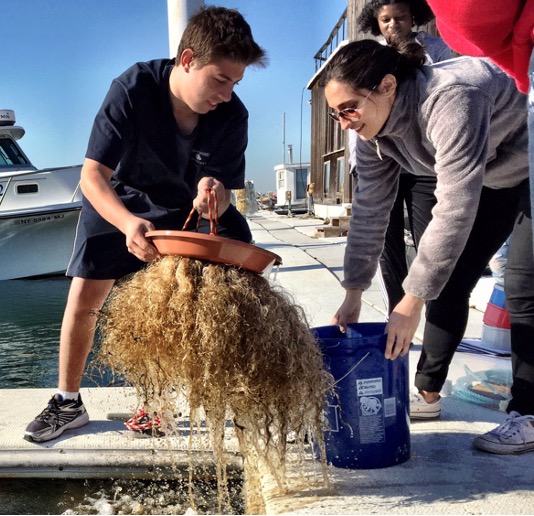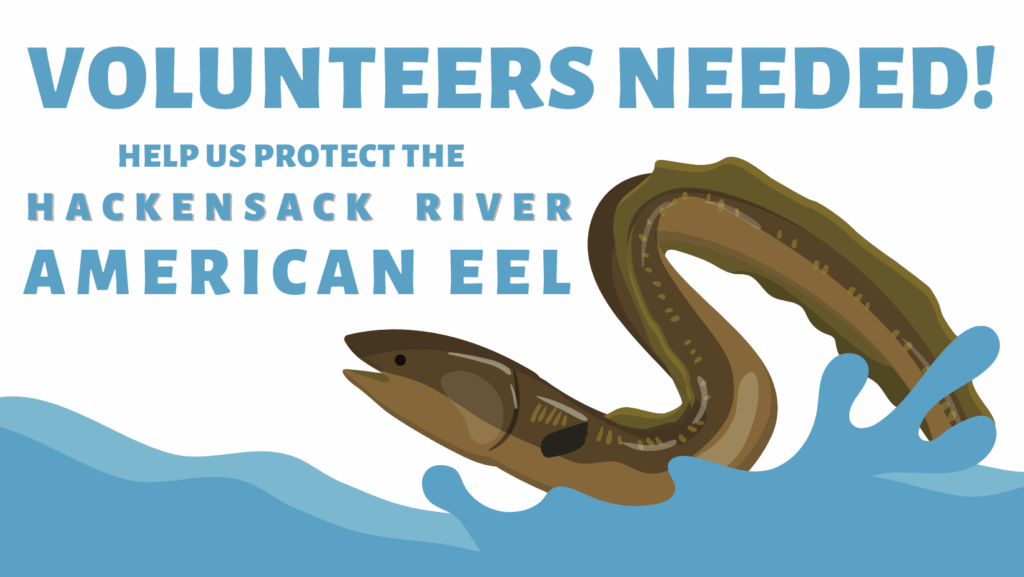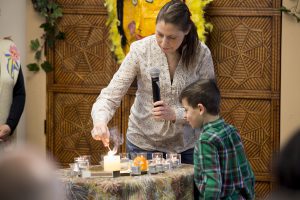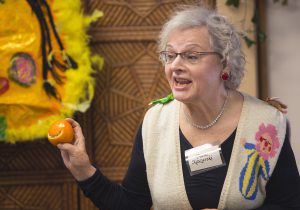Our Society has won a grant from the NY-NJ Harbor and Estuary Program (Hudson River Foundation) to help perform important environmental work. Weekly, from mid-March to mid-June, we will be monitoring eel “mops,” which look like underwater plants and where baby eels hide. These mops will be located:
- On the Fairleigh Dickinson footbridge
- At the end of Pomander Walk, which is a park along the Hackensack Greenway three blocks from the Society
- In the river at Johnson Park, which is a short drive from the Society at the Cedar Lane bridge
Calling all volunteers!

These sites all have a parking lot a short walk away. We need volunteers to check the mops, which will be on the end of ropes, once a week.
To check, you quickly pull the mop out of the river (to trap the eels inside), and shake it into a pail. You then strain the pail into a fish net and count any eels. It takes about five minutes to complete.
The plan is for the Sunday School families to take the lead on this project. I’m hoping a couple of times each month the youth can go check the traps after services. The volunteers can record the data via phone, using an online spreadsheet. We need volunteers for those Sundays that the youth can’t do the checking and data recording. I hope volunteers can also check to see if the data has been recorded and to make sure we have data from each week.
Constructing the eel mops
On Monday, March 6, 11:30 am, at the meetinghouse we’re going to be making the eel mops, and Groundwork Elizabeth will join us. I will also bring some of the materials to the Family & Friends Circle so that the youth can help build a mop. If you can help, please contact me at [email protected] or 914-648-0009. We need many hands to untangle the synthetic rope fibers. Lunch will be provided.
A second goal of this grant is to educate residents about the importance of maintaining habitats for eels.

Why eels? Yuck!
American eels are an amazing species, but people often don’t like them because their elongated bodies remind them of snakes. At one time, nearly one-quarter of all fish life in American rivers were eels, but they have been driven next to extinction in many areas because of pollution and dammed rivers. They are a “keystone” species, meaning their young are eaten by lots of other animals, including a surprising number of shoreline birds. They are also an “indicator” species, as the number of eels tells you whether or not a habitat is becoming healthy again.
Eels live most of their lives (up to 88 years) in freshwater rivers, streams, and estuaries. The number of eels tells you whether of not a habitat is becoming healthy again. Eels are a radically different species to us, and learning to create a “home for all” is important for our youth to learn conservation. Other areas of the world have cute pandas or fuzzy, lovable creatures. New Jersey (and the East Coast) has the eel. It is OUR wild species, still living next door the Ethical Society in their natural habitat, and still engaging in its amazing migration for the past 64 million years or so.
Eel will star at Spring Festival
The theme of our Spring Festival on April 23 will be “A Home for Us All,” including a celebration of the American eel. That day, the Hudson Estuary Program and Groundwork Elizabeth–and possibly other environmental groups–will be joining us, we’ll have eel artwork, and I’m building a large eel costume for the youth to use as part of the celebration.
Let’s be successful!
I hope to receive future grants for environmental projects and the successful completion of these is important to prove the Society can be a good partner. Learning community science is great for young adults (of all ages), and so is doing our part to help protect the Hackensack River, for which this data is needed. Thanks for your time with this, which I think will be fun!
Curt Collier
More detail about the project and eels.


